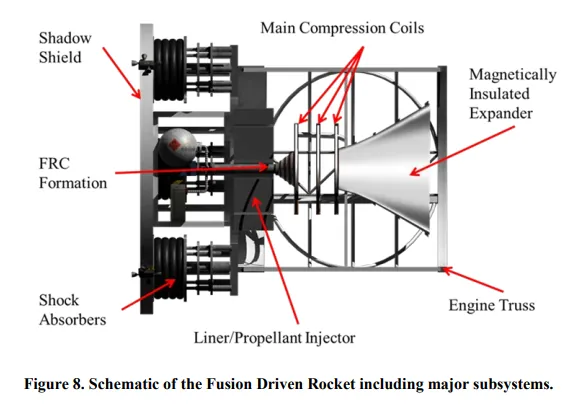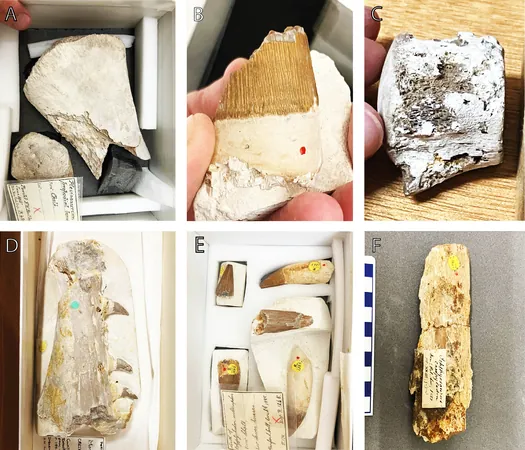
Blast Off to Proxima Centauri: How Fusion Could Catapult Us to Potentially Habitable Worlds!
2025-07-06
Author: Nur
Journey to Proxima Centauri b: The Next Frontier
Proxima Centauri b, the closest exoplanet nestled in the habitable zone of its star, is drawing significant interest from scientists and visionary space missions. Despite our technological limitations and the vast distances involved, the quest to explore this intriguing world is gaining momentum.
Fusion Propulsion: A Game Changer for Space Exploration
Imagine launching a probe weighing hundreds of kilograms to this distant star system—this transformative idea sparked Amelie Lutz’s Master's Thesis at Virginia Tech. Lutz proposed harnessing the power of fusion propulsion systems to send a robust spacecraft equipped with advanced sensors to deeply investigate Proxima Centauri b.
The Sensors of Discovery
With Proxima Centauri b's potential for habitability, the craft would boast an arsenal of 11 sophisticated sensors, including spectrometers and magnetometers. These tools aim to unveil the mysteries beneath the planet's surface, peering under any ice sheets that might veil its secrets.
Boosting Communication Across the Stars
Communicating with a probe millions of miles away poses its challenges, but Lutz has an innovative solution. By utilizing Proxima Centauri’s solar gravitational lens, she proposes enhancing communication power, theoretically achieving a transmission rate of 10 megabits per second per watt dedicated to the craft’s communication array.
Exploring Fusion Propulsion Options
The real innovation lies in the spacecraft’s propulsion system. Lutz evaluated three distinct fusion drive concepts, each capable of utilizing four types of fuel. One option is a fusion-driven rocket employing magneto-inertial fusion, transforming fusion energy into thrust with remarkable efficiency.
Another contender is an inertial-electrostatic confinement engine, lightweight but fraught with technical limitations. Lastly, there's the Antimatter Initiated Microfusion (AIM) system, which, while compact, necessitates rare antimatter to ignite.
Fueling the Future: A Complex Choice
Lutz considers four fuel types commonly analyzed for fusion reactions. While Deuterium-Deuterium (D-D) is simple, it offers low energy output. Deuterium-Tritium (D-T) generates more energy but risks damaging the craft's systems with neutron emissions.
The more exotic Proton-Boron-11 (p-B11) demands extremely high temperatures for minimal energy, while the coveted Deuterium-Helium-3 (D-He3) stands out for its high energy production and lower neutron output, despite its scarcity on Earth.
Charting the Course: Mission Profiles and Beyond
To identify the best fuel-propulsion pairing, Lutz analyzed various mission profiles. A daring non-decelerated flyby could propel the spacecraft past Proxima Centauri b at a staggering speed of 24,000 km/s, limiting its scientific capabilities.
Alternatively, a slower flyby at about 25 km/s allows for more robust data collection. However, Lutz believes with precise trajectory adjustments, it may be possible for the probe to achieve an orbit around the exoplanet, dramatically enhancing data-gathering opportunities.
A Promising Future Awaiting Validation
According to Lutz's findings, a fusion-driven rocket utilizing D-He3 could reach the Proxima Centauri system and even establish orbit around the planet in roughly 57 years—a remarkable timeframe for an interstellar mission with a 500 kg craft! Yet, it’s essential to remember that these ideas remain largely theoretical. The fusion technologies discussed have yet to be successfully tested, and the journey to developing such ambitious spacecraft will require overcoming significant technical and political hurdles. But who knows? With advancements in technology, we may find ourselves exploring Proxima Centauri b sooner than we think!

 Brasil (PT)
Brasil (PT)
 Canada (EN)
Canada (EN)
 Chile (ES)
Chile (ES)
 Česko (CS)
Česko (CS)
 대한민국 (KO)
대한민국 (KO)
 España (ES)
España (ES)
 France (FR)
France (FR)
 Hong Kong (EN)
Hong Kong (EN)
 Italia (IT)
Italia (IT)
 日本 (JA)
日本 (JA)
 Magyarország (HU)
Magyarország (HU)
 Norge (NO)
Norge (NO)
 Polska (PL)
Polska (PL)
 Schweiz (DE)
Schweiz (DE)
 Singapore (EN)
Singapore (EN)
 Sverige (SV)
Sverige (SV)
 Suomi (FI)
Suomi (FI)
 Türkiye (TR)
Türkiye (TR)
 الإمارات العربية المتحدة (AR)
الإمارات العربية المتحدة (AR)